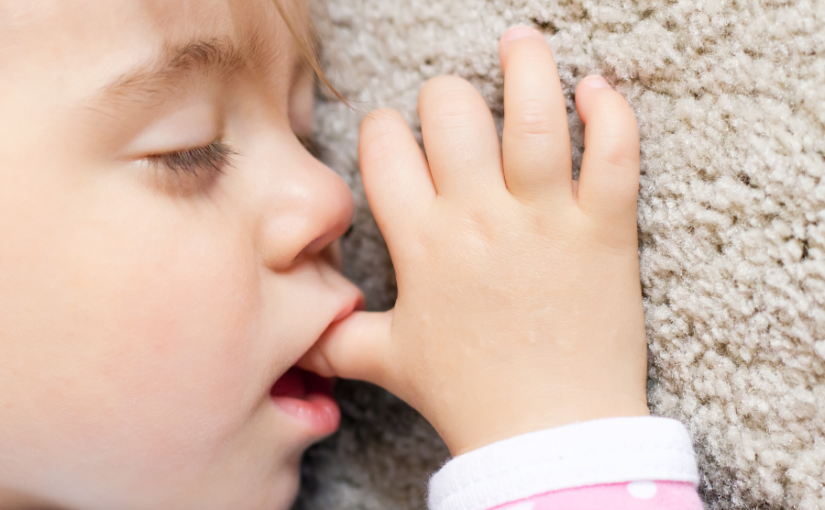By: Dr. Elizabeth Eggert
Oxygen is essential for life. Without it, we wouldn’t survive, and without an adequate amount of it, our bodies don’t function properly. We breathe in oxygen through our nose and mouth. From there, oxygen enters our bloodstream and moves into every cell of our bodies, affecting every organ and system. However, certain factors can inhibit our body’s ability to access ample oxygen, which can, in turn, affect our overall health in some major ways.
One primary culprit of inadequate oxygen is Orofacial Myofunctional Disorder or OMD. Alarmingly, 38% of the population is affected by OMD. Let’s take a few minutes to learn what OMD is, causes and symptoms of OMD, and the importance of nasal breathing for optimal health.
The Basics of Proper Breathing
Breathing is part of the parasympathetic nervous system, and for most people, it occurs naturally, without much thought.
As a result, you may not realize there is a right way and a wrong way to breathe, and improper breathing lends itself to some serious problems.
When the face, mouth, and jaw structure as well as the soft tissue structures and tongue placement are aligned and functioning as intended, proper breathing is effortless, and our bodies get the oxygen they need. However, when one or more components of the orofacial structure are misaligned or not working properly, breathing is compromised and can negatively affect a person’s health.
Habits and Issues That Can Cause Orofacial Myofunctional Disorder
Taking charge of your health and your children’s health can, in many ways, minimize the risk of OMD.
Thumb-sucking is a developmentally normal and healthy reflex that helps babies self-soothe and fall asleep. However, if this reflex becomes a habit and continues past the age of one, or definitely into the toddler years, it can exert too much force against a child’s developing front teeth and cause a high and narrow palate. Over time, it can train a child’s tongue to anchor down and forward instead of resting on the roof of the mouth. Ultimately, it can lead to OMD and affect speech and breathing.
Extended use of pacifiers, bottles, and sippy cups can have the same negative effects on a child’s mouth and facial development, resulting in impaired speech and restricted airflow.
According to the Mayo Clinic, up to 10% of babies are born with ankyloglossia, also known as a tongue tie. If not corrected, ankyloglossia, which affects the position and movement of the tongue, can make it difficult to close the lips properly, speak without a lisp, and breathe properly. In other words, a tongue tie can affect oral posture and lead to OMD. If you think your child has a tongue tie, Dr. Elizabeth Eggert and Dr. Jeff Eggert would be happy to assess your child in our office and advise if surgery would be the best course of action to avoid a cascade of future health issues.
Nail-biting, bruxism, and tongue, lip, and cheek-sucking are other habits proven to cause muscle and structural disorders of the face, mouth, and jaw. If you struggle with these bad habits, behavior modification, a custom night splint, or other interventions may help preserve proper alignment and function, minimizing the risk for OMD related issues.
Neurological deficits and developmental delays—causes out of a person’s control—can also lead to OMD.
Read Lizzie’s story here and see how Dr. Elizabeth Eggert detected early signs of OMD and, together with Lizzie’s parents, pursued early treatment to help set her up for a lifetime of health!
Symptoms of Orofacial Myofunctional Disorder
Some of the most common symptoms of OMD include:
- Tongue thrust
- TMD
- Headaches
- Sleep-disordered breathing/sleep apnea
- Fatigue, anxiety, or depression
- Lisp
- Drooling
- Difficulty swallowing
- Mouth breathing
In addition, people with OMD often present with a sluggish face and weak, parted lips, a tight chin, and a facial grimace.
Improper Orofacial Structure Can Lead to Mouth Breathing
Let’s take a closer look at mouth breathing.
When the face, mouth, or jaw is misaligned or working improperly, nose breathing can be difficult. Because of our inherent need for oxygen, our bodies will do whatever is necessary to get proper airflow. That’s why both children and adults with OMD often resort to mouth breathing, especially when they’re asleep.
Mouth breathing is inferior to nasal breathing because air that passes through the mouth isn’t filtered like air through the nose. The nasal cavity also humidifies air before it enters the lungs. Additionally, our bodies take in more oxygen when we breathe in through our noses, and our nervous systems shift into a more parasympathetic state, reducing oxidative stress.
Health Implications Beyond the Mouth
Why is mouth breathing a big deal?
Over time, mouth breathing can permanently alter the position of the jaw, tongue, and lips, move the tongue low and forward to facilitate airflow, and lead to malocclusion—an uneven bite.
Poor oxygen and higher oxidative stress can affect children’s cognition, behavior, and academic performance and lead to hyperactivity. Left untreated, it can also lead to high blood pressure, diabetes, heart disease, and stroke in adults.
Clearly, Orofacial Myofunctional Disorder is nothing to take lightly. If you believe you or your child is dealing with OMD, schedule an appointment with Dr. Elizabeth Eggert or Dr. Jeff Eggert at Eggert Family Dentistry. They will assess your mouth, face, and jaw and determine if everything is working properly. If they conclude that OMD is present, they will help you create a plan for the best path forward. This could encompass one of many interventions, including a night splint, dental or orthodontic treatment, a custom Myobrace® appliance, or behavior modification. Give our office a call today at 651.482.8412!
